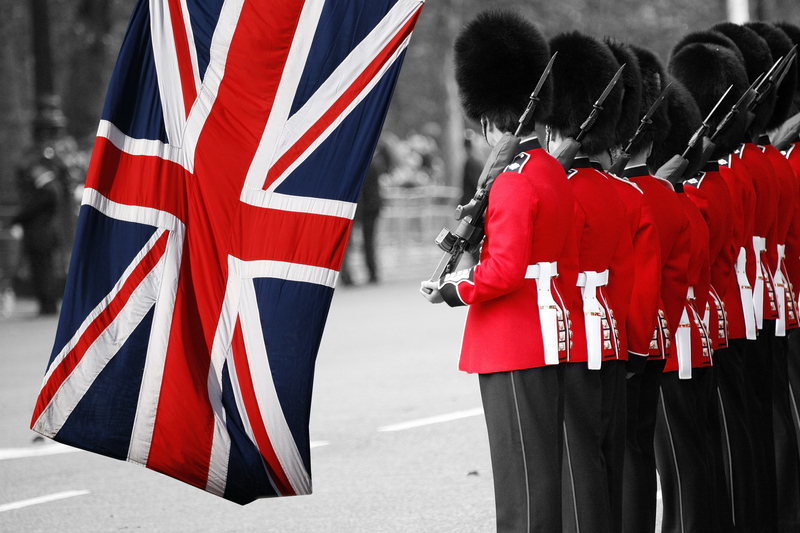Tips for Safe Bed and Mattress Transportation
Posted on 09/06/2025
Tips for Safe Bed and Mattress Transportation
Transporting a bed and mattress from one location to another can be a daunting task. Whether you're moving to a new house, delivering a recent purchase, or helping a friend relocate, it's essential to ensure that your bed frame and mattress arrive in perfect condition. Improper handling can lead to damaged frames, stained or torn mattresses, and even personal injuries. To help you avoid these pitfalls, here is a comprehensive guide packed with expert advice and practical suggestions for safe bed and mattress transportation.
Understanding the Challenges of Moving Beds and Mattresses
Unlike small furniture, beds and mattresses are bulky, heavy, and often awkwardly shaped. Their large surface area can make them tricky to maneuver through doorways, hallways, and staircases. Furthermore, mattresses are prone to bending, tearing, or collecting dirt during the move, while bed frames can sustain scratches or structural damage if not handled with care. Recognizing these challenges is the first step to executing a safe bed and mattress transportation.
- Size and Weight: Queen and king beds, alongside foam or hybrid mattresses, can be particularly hefty and require extra strength to move.
- Material Sensitivity: Mattresses, especially memory foam and pillow tops, are susceptible to irreversible deformity from improper handling.
- Structural Integrity: Bed frames consist of several components that need careful dismantling and assembly to avoid loss or breakage.

Pre-Transportation Preparation Tips
1. Gather the Necessary Supplies
The bed and mattress relocation process becomes much smoother when you have the right equipment and tools. Assemble the following supplies before the move:
- Mattress bags: Inexpensive and protective, these plastic covers shield mattresses from dirt, moisture, and stains.
- Moving blankets or furniture pads: Essential for wrapping bed frames to prevent scratches and dents.
- Bubble wrap and packing tape: Ideal for fragile bed parts.
- Tool kit: Including screwdrivers, Allen wrenches, and pliers for bed frame disassembly.
- Straps or rope: Secure items in the moving vehicle and avoid shifting during transport.
- Work gloves: Protect your hands from cuts, splinters, and strains.
2. Clean and Inspect Everything
Prior to mattress and bed movement, give all parts a thorough cleaning. This prevents the transfer of dirt or pests while offering a chance to examine for signs of wear, infestation, or damage. Ensuring everything is in good condition pre-transport can help you avoid surprises at your new destination.
Disassembling Beds for Easier Handling
A fully assembled bed is almost impossible to maneuver through doorways or onto a moving truck. Dismantle bed frames according to the manufacturer's guidelines. Keep these tips in mind:
- Remove Bedding and Mattress First: Strip sheets, pillows, blankets, and mattress toppers. Store all linens in labeled bags for easy unpacking.
- Disassemble Frame Components: Headboards, footboards, side rails, and support slats should be taken apart as much as possible. Use a screwdriver or Allen wrench as needed. Photograph each step if you're unclear about reassembly later.
- Keep All Hardware Together: Put screws, bolts, and small parts in a labeled plastic bag. Tape the bag securely to the frame or store it in a designated moving box.
- Wrap Fragile and Decorative Elements: Use bubble wrap for carved headboards, delicate feet, or any glass or metal accents.
Packing and Protecting Your Mattress Properly
1. Use a Mattress Bag
Wrapping your mattress in a plastic or specialized mattress moving bag is the most effective protection against dust, moisture, and dirt. Sizes are available to fit twin, full, queen, and king mattresses. After slipping the mattress in, seal the ends tightly with packing tape to prevent slippage or exposure during the move.
2. Avoid Bending or Folding
Most mattresses are designed to remain flat during transport. Bending or folding can lead to permanent damage, especially for innerspring and memory foam models. Only mattresses labeled as 'foldable' by the manufacturer should be bent, and even then, follow guidelines strictly.
3. Label Orientation if Required
Some high-end mattresses have specific orientation requirements for travel. If the mattress should remain upright, label it clearly and notify helpers or movers.
A Safe Mattress and Bed Loading Approach
1. Team Up for Lifting
Beds and mattresses are heavy and unwieldy, making it unsafe to carry them alone. Always recruit at least one strong helper--preferably more for large items. Use proper lifting techniques to prevent injuries:
- Bend at the knees, not the waist
- Keep the back straight
- Hold the mattress or frame close to the body
- Communicate clearly with your team
2. Maneuvering Through Tight Spaces
Navigating staircases, narrow corridors, and doorways is often the trickiest part of mattress and bed transport. Plan your route beforehand:
- Measure entryways and the bed frame/mattress dimensions
- Remove doors from hinges if necessary
- Cushion corners and walls with blankets or temporary padding
Securing Beds and Mattresses in the Moving Vehicle
Proper placement and securing in your vehicle are vital for safe arrival. Consider these strategies whether you rent a moving truck, use a pickup, or hire professionals:
- Lay Mattresses Flat When Possible: Laying the mattress flat on the truck floor reduces the risk of warping and wear. Avoid placing heavy objects atop the mattress.
- Rig to the Side for Upright Transport: If you must transport the mattress on its side, secure it against a wall with straps. This saves space, but ensure the mattress stands straight to prevent sagging.
- Buffer Bed Frame Pieces: Place moving blankets or furniture pads between individual frame components. Avoid stacking glass or fragile items on or beneath bed parts.
- Double Check for Shifting: Use ratchet straps and ropes to tie everything down firmly. Items that slide or tip during a drive can become dangerous projectiles or cause damage.
Transporting Beds and Mattresses Without a Truck
Don't have access to a moving truck? Here's how you can safely transport a bed and mattress using a car, van, or roof rack:
- Use a Roof Rack: Some cars allow secure attachment of mattresses on the roof using heavy-duty straps. Ensure the load is tightly fastened and legal in your region. Never use rope through open windows, as this can damage your car and pose risks.
- Inside a Minivan or SUV: Fold down rear seats to maximize space. Protect the mattress and frame with blankets and secure them with straps to prevent shifting.
- Consider a Delivery Service: For long distances or high-value mattresses, hiring professionals or specialized couriers with proper equipment is often the safest option.
Unloading and Reassembling Your Bed and Mattress
Arrival at your new space is only part of the job. Take care when unloading and be patient with reassembly:
- Reverse the Loading Steps: Carefully unload mattress and frame components, keeping an eye out for obstacles or slippery surfaces.
- Inspect for Damage: Before bringing items indoors, check for tears, stains, dents, or missing hardware. Clean surfaces if needed.
- Reassemble in the Bedroom: Bring all frame components and your hardware bag to the setup location. Use prior photos or instructions as a guide.
- Allow Mattress to Breathe: Remove the cover and let the mattress air out before making the bed.
Hydrate and Take Breaks
Lifting bed frames and mattresses is tiring work. Take regular breaks and stay hydrated, especially during hot or humid weather.
Professional Mattress and Bed Transport Services
While DIY moves are budget-friendly, professionals offer peace of mind--especially for valuable or unusual bedding. Consider hiring movers who:
- Specialize in bed and mattress transportation
- Provide proper insurance coverage
- Bring specialized equipment for safe lifting and secure packing
- Handle assembly and disassembly
Compare quotes and check reviews before booking. For certain types of beds, such as adjustable bases or antique headboards, expert handling may be the wisest move.

Extra Tips for Secure Mattress and Bed Moving
- Don't Drag Mattresses or Frames: Dragging can tear fabric and chip wood or metal parts.
- Don't Stack Heavy Objects on Soft Mattresses: Excess weight can cause indents or damage internal materials.
- Store Mattresses Flat if Delayed: If you must store a mattress before setup, keep it flat and uncovered in a dry, clean area.
- Document Condition: Photograph your bed and mattress before moving as proof in case of insurance claims or disputes.
- Double Up Your Mattress Bag in Bad Weather: If rain or snow is possible en route, an extra layer of protection is worth the investment.
Conclusion: Enjoy Safe and Stress-Free Transportation
Moving your bed and mattress doesn't have to be a stressful ordeal. With thoughtful preparation and careful execution, you can ensure your bedding arrives intact, comfortable, and ready for a restful night's sleep. By following these safe mattress and bed transport tips, you protect both your investment and your well-being--making your next move a smooth and successful transition.
Remember: Proper tools, teamwork, and attention to detail are the keys to a successful bed and mattress move. Stay safe, and enjoy your new space!





